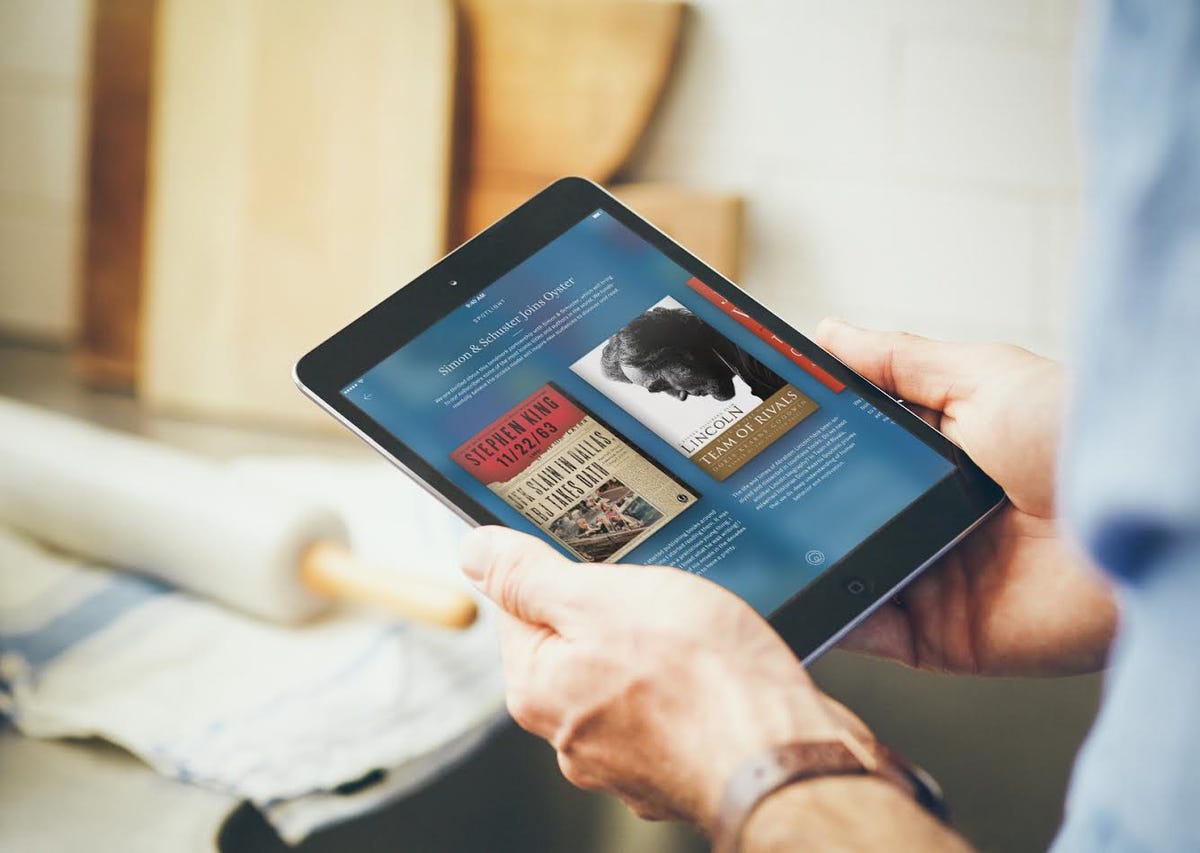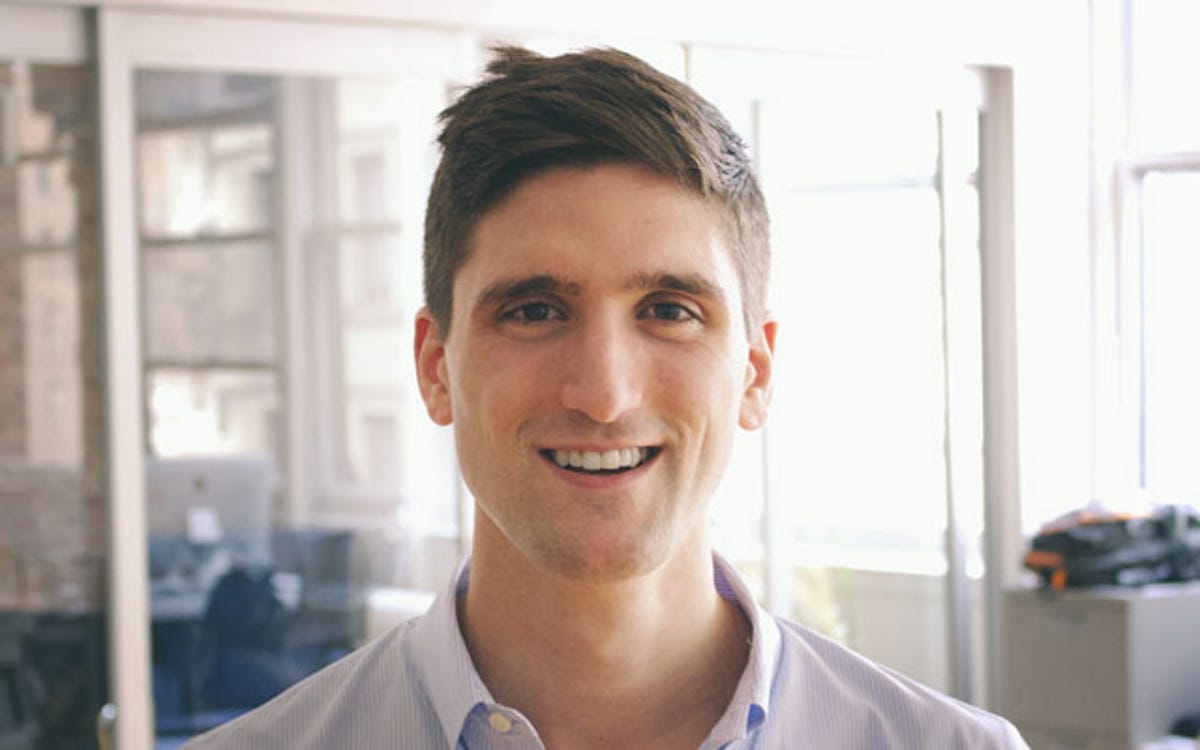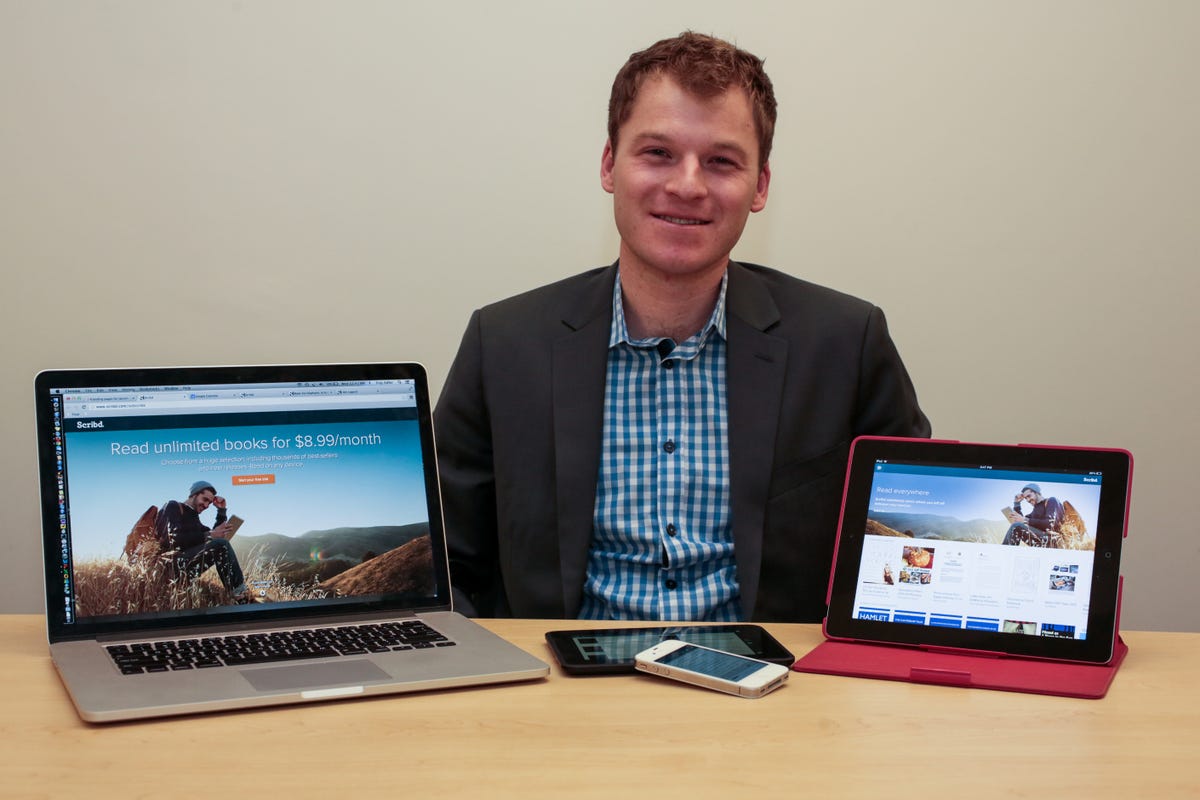
Fledgling e-book subscription services Oyster and Scribd got a big boost as Simon & Schuster, Inc., one of the “Big 5” publishers, announced today that its backlist e-book titles are now being made available to consumers via the subscription services.
Both companies are vying to become the Netflix for digital books and have all-you-can-read plans for less than $10 a month — Oyster is $9.95 (£5.90, AU$10.80), while Scribd is $8.99 (£5.30, AU$9.70). Reading apps are available for iOS devices and Scribd offers both an Android app and an app for Amazon’s Kindle Fire tablets (there’s currently no Oyster app for Android).
Simon & Schuster, like CNET, is a division of the CBS Corporation. It will make its backlist e-book titles available to consumers in all countries where Simon & Schuster holds e-book rights, and where Oyster and Scribd offer their subscription services to consumers (the backlist refers to older, less current titles, and doesn’t include recent releases and current bestsellers).
Both subscription services launched last fall and have been steadily adding content, with Oyster saying that it now has over 500,000 titles in its library (Scribd also houses “premium” documents in its subscribers library).
At launch, both companies struck deals with HarperCollins for the majority of its US and Christian backlist catalogs, and other publishers like Houghton Mifflin Harcourt and Workman also came on board. But Simon & Schuster is a big catch, with books from such authors as Stephen King, Ernest Hemingway, F. Scott Fitzgerald, Joseph Heller, Mary Higgins Clark, David McCollough, and Steve Job’s biographer Walter Isaacson, under its publishing umbrella (to name a few).
Does this mark a tipping point for e-book subscription services? Both Scribd and Oyster certainly hope so, and with that in my mind I sent an email to the CEO of each company asking the same five questions (I didn’t tell them I was asking the same questions). Here are the responses I got, with Oyster CEO Eric Stromberg winning the coin flip and going first. Scribd CEO Trip Adler follows.


Oyster Books
If Oyster and Scribd end up doing the same backlist deals with the same publishers, how will Oyster differentiate itself? (Scribd seems to cost a dollar less at this point.)
Stromberg (Oyster): Our readers care primarily about two things: that we have the best selection of books, and that the reading experience is well designed.
On the selection front, over 50 of our top 100 most popular titles aren’t available on competing services. This is a strong signal to us that our titles are unique and appealing to our subscribers. Today, publishers such as Perseus, Houghton Mifflin Harcourt, Disney, McSweeney’s, Melville House, Rodale and more are unique to Oyster. We’re focused on continuing to lead the way on the content side.
With respect to the product, our aim is to build the best way in the world to read any book, with an emphasis on beautiful design. From how we present books visually in the browse experience, to the editorial around them, to the unique typographic themes in the reader, everything is well-considered.
You have very similar looking websites, how did that happen?
Stromberg (Oyster): Our website maintains the core of its original design from September 2013 when we launched the first-ever unlimited subscription model for books. Innovative design is something we really pride ourselves on (my co-founder Willem Van Lancker is a former designer at Apple, IDEO and Google) and we’ve definitely seen our readers note us as leaders on that front (a few examples from press here, here and here).
Are you concerned that Amazon will eventually provide a similar service for Kindle users?
Stromberg (Oyster): We aren’t too focused on predicting what Amazon will or won’t do. We are focused on building the best all-in-one reading experience for our readers and ensuring that Oyster is delivering the content that they’re looking for.
Oyster is an increasingly meaningful channel for publishers to distribute their books. It is our strong belief that over the next five years as the e-book market matures, a growing share of reading will be done through unlimited subscription, and Oyster will be the way people do that.
Do you expect other major publishers to come on board before year’s end?
Stromberg (Oyster): For us, this deal represents a tipping point for the access model in books, and a huge leap forward toward our goal of making Oyster the best place in the world to read any book.
We do expect to bring on a number of other major publishers throughout 2014.
How has your adoption rate been? (Do you have any numbers to give out?)
Stromberg (Oyster): We aren’t sharing subscriber numbers publicly at this time. We’ve seen a very strong virtuous cycle between new subscriber growth and new content. Many of our latest deals that expand the content offering of existing partners (HarperCollins and Perseus) as well as those bringing on new partners (Disney and Simon & Schuster) are a direct result of the strong adoption we’ve seen. When we launched we offered 100,000 titles, and we now have over 500,000 titles from more than 1,600 publishers.


Sarah Tew/CNET
If Oyster and Scribd end up doing the same backlist deals with the same publishers, how will Scribd differentiate itself? (You seem to cost a dollar less at this point.)
Adler (Scribd): We’re focused on building the best product with the most books for our global audience of 80 million users in over 100 countries on whatever device they like. Here’s a few more specifics:
- We do a terrific job making the product work on iOS devices, Android devices, Kindle Fire, as well as Web browsers, and we’ve done a lot of work making it sync seamlessly across devices.
- We’ve put a lot of work into book discovery, with great algorithmic recommendations, powerful search features, and cool social features.
- We actually have a pretty unique set of content, with reference publishers like Wiley and Lonely Planet, with the largest subscription romance offering on the Internet with Kensington and Avon, as well as 50M user-generated documents. We’ve done a terrific job of driving distribution to backlist books and the long tail of reference content.
- We’ve been promoting our subscription offering to our audience of 80M users and as a result it’s been growing like crazy at 50 percent per month since January 2013, and publishers have been very pleased with their payouts.
You have very similar looking websites, how did that happen?
Adler (Scribd): I don’t know. We soft-launched our product in January 2013 and haven’t made significant changes to it since then. We’ve made a lot of incremental improvements and it’s continually getting better, but the core product we are building is the same thing we started building in late 2012.
Are you concerned that Amazon will eventually provide a similar service for Kindle users?
Adler (Scribd): The book subscription space is getting super interesting, and I’m excited to see how it plays out. I’m also curious what Amazon thinks of our engagement numbers in our Kindle Fire app.
Do expect other major publishers to come on board before year’s end?
Adler (Scribd): I’m really optimistic about the book subscription space, and I think we’re just at the beginning of a tipping point.
How has your adoption rate been? (Do you have any numbers to give out)?
Adler (Scribd): Incredible. Since we soft launched the book subscription service in January 2013, it’s been growing at 50 percent per month. That’s 438x growth in 15 months! On top of this engagement has been solid, with the average user spending 45 minutes reading per session, and engagement has been steadily improving as we add more books and improve the product. I’m really excited to see how these numbers respond when we add the S&S books!




